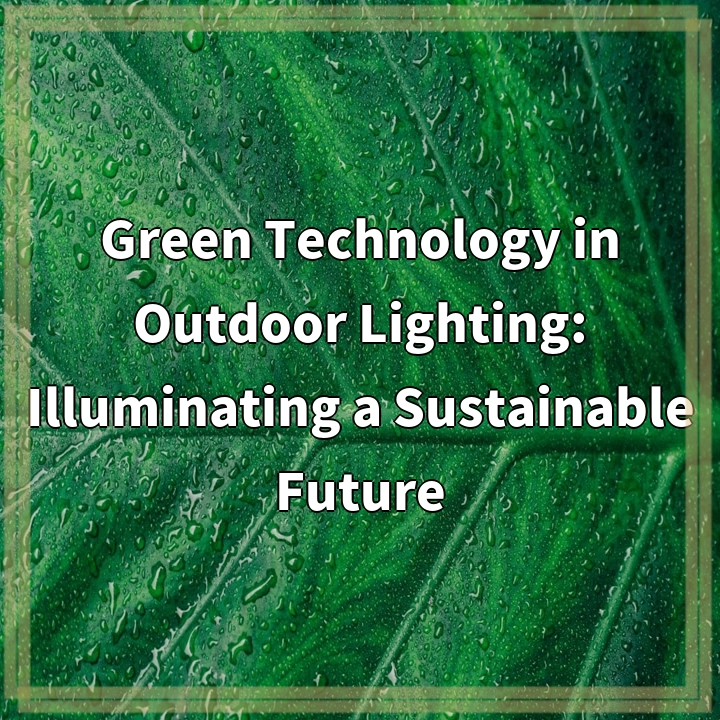Physical Address
304 North Cardinal St.
Dorchester Center, MA 02124
Physical Address
304 North Cardinal St.
Dorchester Center, MA 02124

Green technology in outdoor lighting refers to the use of environmentally friendly and energy-efficient technologies to illuminate outdoor spaces. This includes utilizing LED (Light Emitting Diode) lights, solar power, motion sensors, and other advanced technologies to reduce energy consumption and minimize environmental impact.
While outdoor lighting is essential for safety, security, and aesthetic purposes, it is not without its challenges. Traditional lighting methods often result in excessive energy consumption, light pollution, and carbon emissions, which contribute to climate change and harm wildlife. Additionally, outdated lighting fixtures and inefficient systems can lead to higher maintenance and operational costs for communities and businesses.
Addressing the real-world problems associated with outdoor lighting requires implementing sustainable solutions that prioritize energy efficiency and environmental conservation. Here are some strategies and technologies that can help:
LED lights offer numerous benefits, including lower energy consumption, longer lifespan, and reduced maintenance costs. They are highly efficient and can be used in a variety of outdoor lighting applications, such as street lights, park lighting, and architectural lighting.
Solar-powered outdoor lighting utilizes renewable energy from the sun and reduces reliance on the electrical grid. By installing solar panels and battery systems, outdoor lighting can operate independently and be more sustainable.
Motion sensors and smart lighting controls can significantly reduce energy waste by automatically adjusting the intensity and timing of outdoor lights based on movement and time of day. This helps to minimize light pollution and ensure optimal energy efficiency.
Effective lighting design involves carefully considering the placement, brightness, and directionality of outdoor lights. By focusing on directing light where it’s needed and avoiding unnecessary spillage, light pollution can be reduced. Additionally, using warm-colored lights instead of cool-colored lights can have less detrimental effects on nocturnal animals.
Educating communities, businesses, and individuals about the environmental impact of outdoor lighting is crucial. By spreading awareness and advocating for responsible lighting practices, we can encourage the adoption of green technologies and promote a more sustainable approach to outdoor lighting.
Green technology in outdoor lighting offers a promising solution to the environmental challenges posed by traditional lighting methods. By embracing energy-efficient technologies like LED lights, solar power, motion sensors, and responsible lighting practices, we can illuminate outdoor spaces while minimizing our carbon footprint and preserving the natural environment for future generations.
If you’re wondering where the article came from!
#